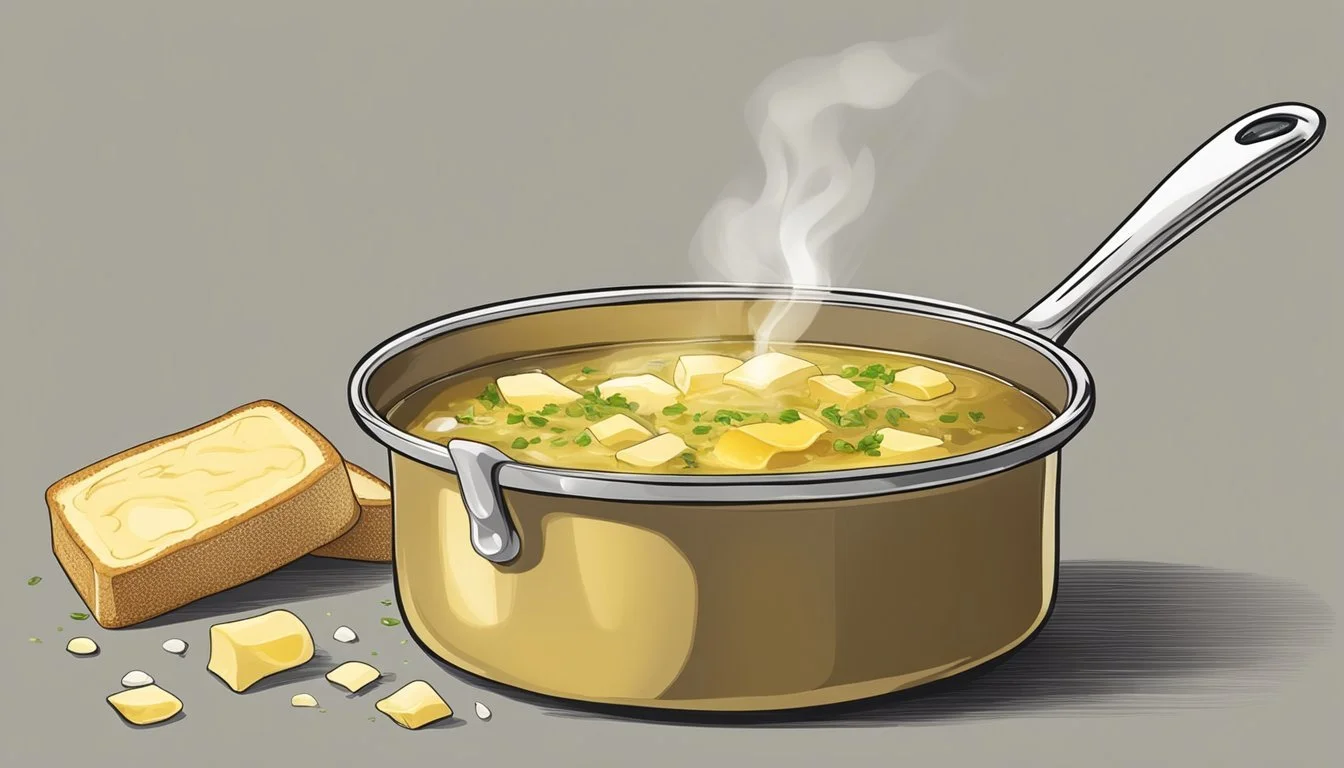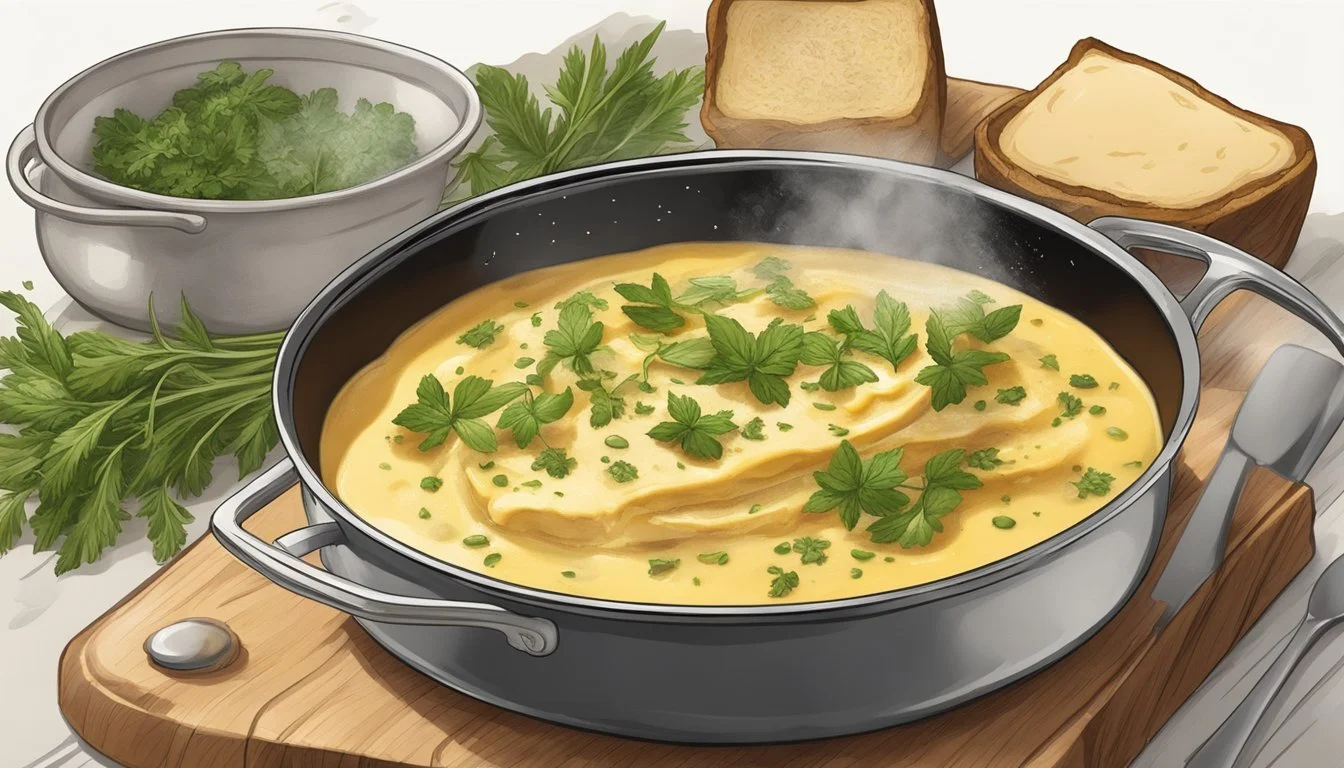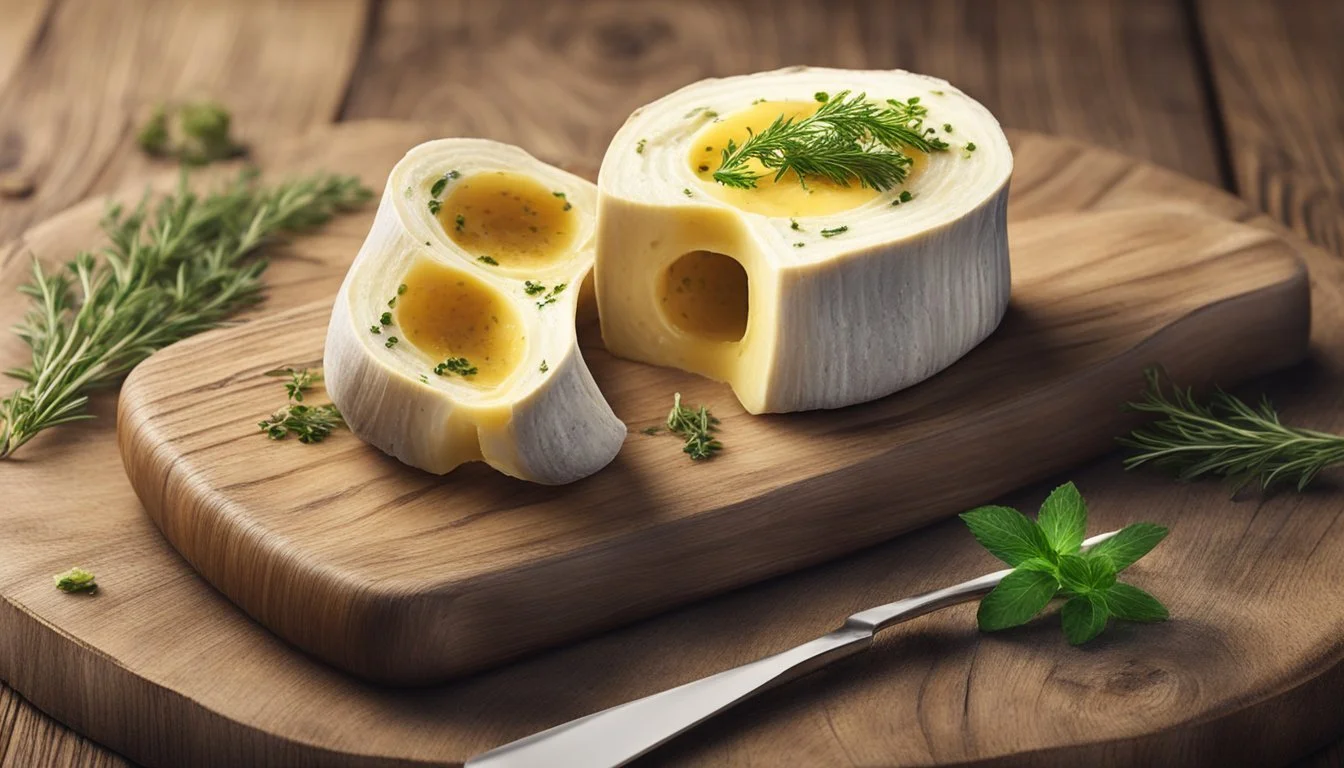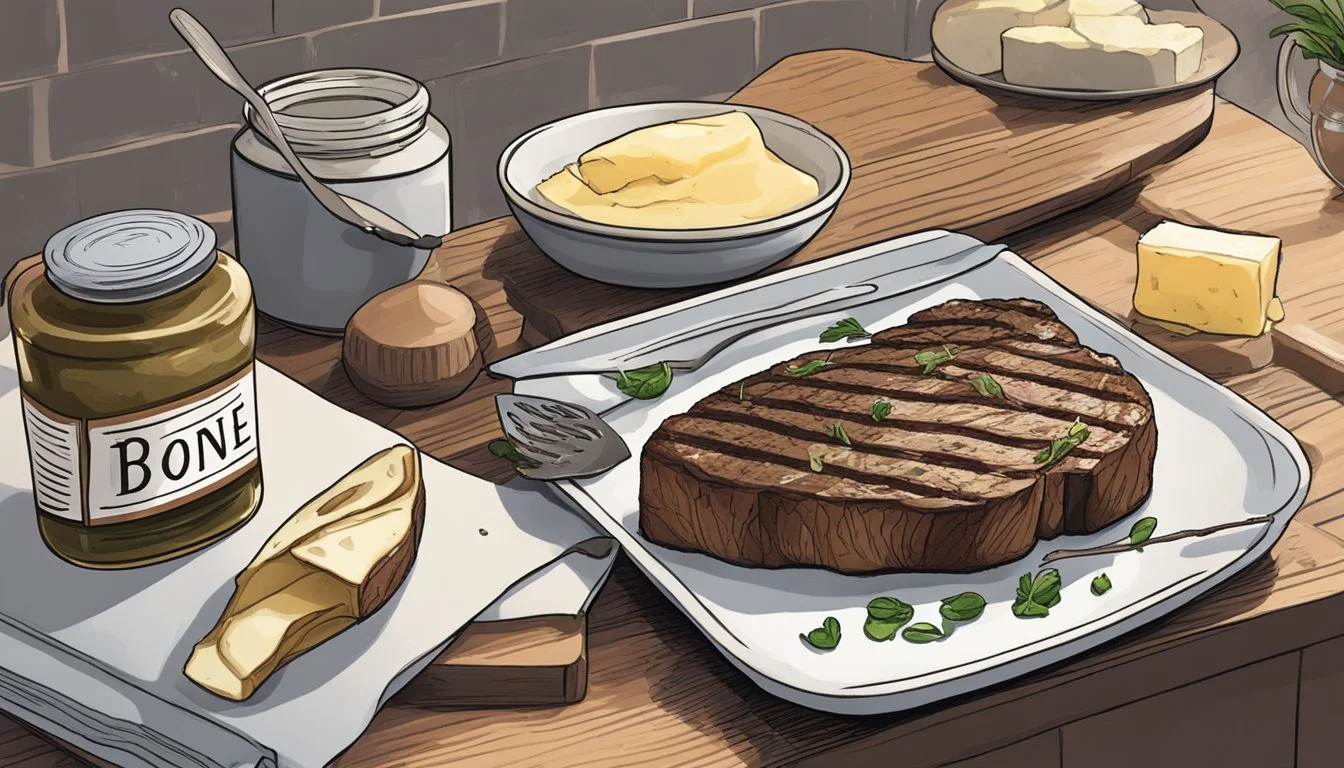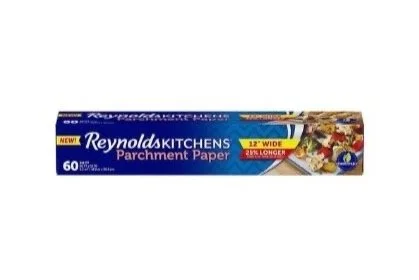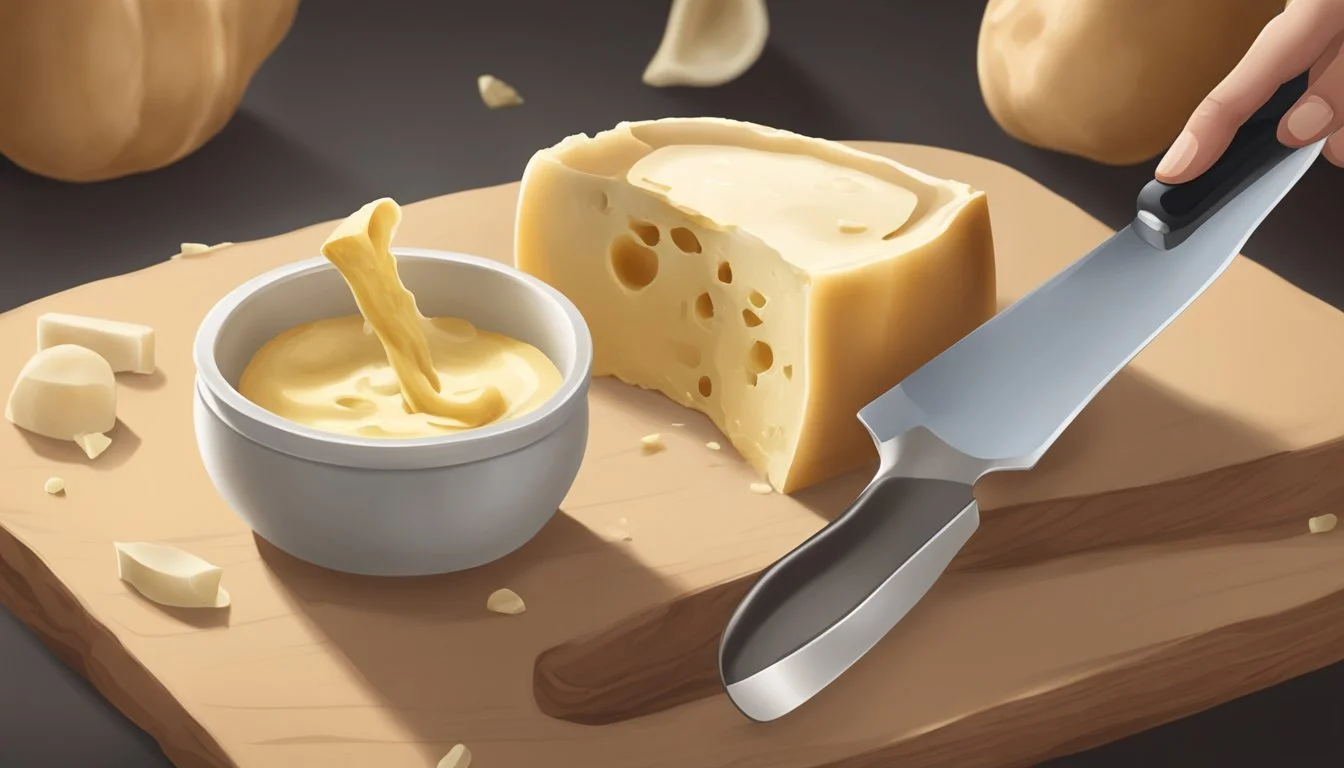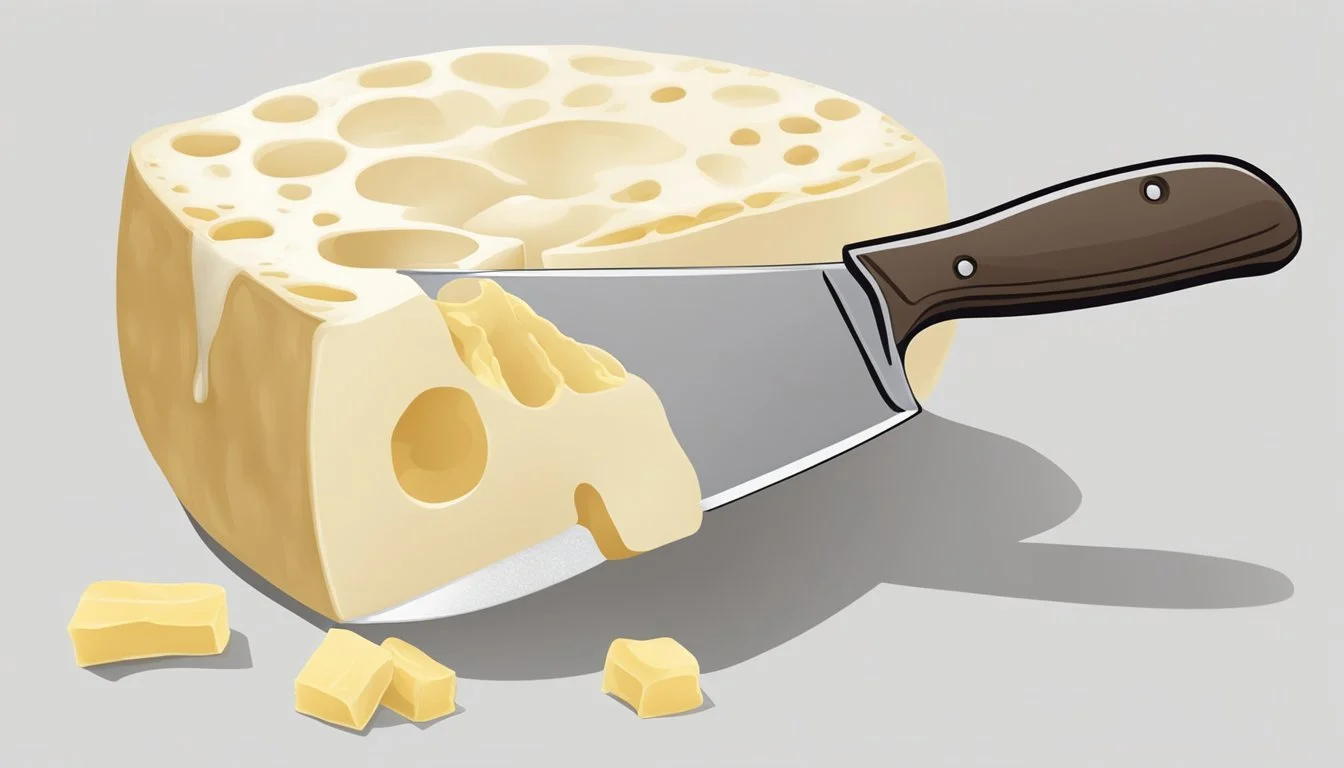How to Make Carnivore Diet Bone Marrow Butter
A Simple Recipe Guide
Bone marrow butter (how long does butter last?) is a nutrient-dense delicacy that fits perfectly within the framework of a carnivore diet, prioritizing the consumption of animal products and excluding plant-based foods. This diet's adherents seek out high-fat, protein-rich foods, making bone marrow an ideal component due to its rich supply of healthy fats, vitamins, and minerals. Bone marrow butter combines the nutritious benefits of bone marrow with a versatile buttery form that can be used to enhance various dishes.
Preparing bone marrow butter requires careful selection of high-quality marrow bones and an understanding of the cooking process that best preserves their nutritional content. By slow roasting or simmering the bones, the marrow is extracted, and can then be whipped into a spreadable butter. This rich, flavorful condiment can be an excellent way to incorporate the benefits of marrow into the carnivore diet, diversifying the palate and adding depth to meals.
It's essential in any preparatory method to maintain the integrity of the nutrients found in marrow. Soaking the bones beforehand can ensure a clean taste, while gentle cooking methods preserve its healthful properties. This attention to detail results in a bone marrow butter with not only enhanced flavor but also maximal nutritional value, aligning with the goals of those following a carnivore dietary lifestyle.
Understanding the Carnivore Diet
The Carnivore Diet is a regimen that emphasizes eating animal-based foods while eliminating plants. It focuses on the consumption of protein and fat, and typically includes meat, fish, eggs, and certain dairy products. People following this diet often report health benefits such as weight loss and improved digestion.
Nutrients in the Carnivore Diet:
Essential Nutrients: Protein sources in the diet provide essential amino acids vital for body function.
Healthy Fats: Sources such as beef and fish contribute omega-3 fatty acids, which are important for brain health.
Vitamins and Minerals:
Vitamin A: Found in liver and fish, supports immune function.
Vitamin K: Present in fermented dairy, it plays a role in blood clotting.
Calcium & Iron: Red meat and fish contain these minerals essential for bone and blood health.
Zinc & Selenium: These trace elements, found in meat, support immune health and thyroid function.
Nutrition Profile: The diet is low in carbohydrates and can help regulate blood sugar levels. Foods recommended are typically high in calories, which can be beneficial for those requiring high energy intake.
Health benefits claimed by advocates include improved mental clarity, reduced inflammation, and potential relief from autoimmune conditions. However, it is crucial to approach the carnivore diet with a clear understanding that nutrition should be balanced and individualized. Consultation with healthcare professionals is recommended to ensure dietary choices meet personal health needs and provide all essential nutrients.
Benefits of Bone Marrow
Bone marrow possesses several nutritional benefits that align well with a carnivore diet. Rich in collagen and glycine, it supports joint health and can contribute to overall well-being. Here's a breakdown of key nutrients found in bone marrow:
Protein and Fats: With around 7 grams of protein and 84 grams of fat per 100 grams, bone marrow is an excellent source of energy and amino acids.
Collagen: Critical for healthy joints, skin, and connective tissues.
Glycine: An amino acid that may benefit cognitive and mental health.
Vitamins: Particularly, bone marrow contains Vitamin K2, which is vital for bone health.
In addition to these nutrients, consuming bone marrow may bolster the immune system. The immune benefits are linked to its lipid profile, which is essential for constructing cell membranes. Moreover, the fatty acids in marrow, such as conjugated linoleic acid (CLA), have been associated with brain health benefits.
Lastly, bone marrow’s contribution to a carnivore diet goes beyond nutrition. Being a source of good fats and proteins without carbohydrates, it helps those following this dietary pattern meet their dietary goals while enjoying the rich flavors that bone marrow delivers.
Selecting Quality Marrow Bones
When embarking on making carnivore diet bone marrow butter, selecting high-quality marrow bones is pivotal. These bones are central to the flavor and nutrient profile of the butter. Shoppers should opt for beef marrow bones as they are rich in essential fats, vitamins, and minerals.
Firstly, one should seek out bones from grass-fed beef. These typically contain a higher concentration of omega-3 fatty acids and are often free of antibiotics and hormones. When inspecting bones, look for a deep red hue, indicating freshness, while the marrow should be a rich and creamy color.
Size also plays a role; larger bones will contain more marrow, but ensure they will fit in your cooking vessel:
Bone Size: Small
Marrow Quantity: Less
Recommended Cooking Method: Quick roasting
Bone Size: Large
Marrow Quantity: More
Recommended Cooking Method: Slow simmering for extraction
When handling beef bones, they must feel heavy for their size—a sign of marrow density. Their surface should show no signs of cracking or drying out, which can impact both the texture and taste of the marrow.
Lastly, one should purchase bones from a trusted source—a reputable butcher or farmer's market, where transparency about the animal's sourcing and diet is provided. Purchasing beef marrow bones from a trusted supplier ensures that you're getting the best quality for your carnivore diet bone marrow butter.
Preparing the Bones
One begins the preparation of carnivore diet bone marrow butter by sourcing high-quality marrow bones. It is advisable to choose bones from grass-fed animals for both nutritional benefits and flavor. Once acquired, the bones require proper preparation to ensure the best possible result in the marrow butter.
Soaking: Before cooking, marrow bones should be soaked in cold water. This step is crucial to remove any blood and impurities, yielding a pale creamy pink marrow rather than an unappetizing grey. They recommend soaking for 12-24 hours, changing the water a few times throughout the process.
Salting: Post-soaking, one can pat the bones dry and season them. Employing coarse salt, such as kosher or sea salt, not only enhances flavor but also assists in drawing out moisture for better roasting. Some prefer a simple approach, using only salt, while others enjoy the addition of pepper for a flavor contrast.
Roasting: When ready to roast, one should preheat the oven to a high temperature — typically around 450°F (232°C). Lining a roasting pan with parchment paper can aid in cleanup. The bones are then positioned on the pan, ensuring they are adequately spaced.
Oven Time: The marrow bones roast until the marrow starts to puff slightly — generally for about 15-25 minutes, depending on size. Conducting a heat test with a metal skewer, inserted into the center of the bone, can confirm if the marrow is ready. When the skewer is very hot to the touch after being removed, the marrow is properly roasted. It's then ready to be transformed into rich and flavorful bone marrow butter.
Roasting Marrow Bones
Roasting marrow bones properly is crucial for creating sumptuous bone marrow butter. The process involves two key tasks: achieving perfect caramelization for maximum flavor and avoiding bone dust contamination.
Achieving Perfect Caramelization
To achieve perfect caramelization, one must first preheat the oven to 450°F (232°C). Place the marrow bones, cut side up, on a roasting pan to allow even heat distribution. The bones should roast for 15-25 minutes. During this time, the marrow should begin to puff slightly, indicating it is ready. Ideal caramelization imbues the marrow with a richer flavor, a crucial step for a delicious marrow butter.
Temperature: 450°F (232°C)
Duration: 15-25 minutes
Visual cue: Marrow puffs slightly
Avoiding Bone Dust
Bone dust can result from sawing the bones to size and is undesirable in the finished product. To avoid it:
Rinse the cut bones under cold water to remove any residual dust.
Pat them dry with a clean towel before proceeding to roast.
Taking these precautions before roasting ensures the resulting marrow is clean and ready for further use in recipes like bone marrow butter.
Creating Bone Marrow Butter
In this section, we detail the preparation of bone marrow butter, a rich and flavorful addition to the carnivore diet. This delicacy combines high-quality fatty tissue from bone marrow with traditional butter, blended to a velvety consistency and seasoned for an unparalleled taste profile.
Combining Ingredients
One begins by extracting the fatty tissue from the bone marrow and combines it with an equal amount of unsalted butter. The specific quantities can vary based on preference, but a standard ratio is one part marrow to one part butter.
Ingredients:
Bone marrow, extracted and cooked
Unsalted butter, softened
Directions:
Remove marrow from bones after cooking and allow to cool.
Place marrow and an equal amount of softened butter into a food processor.
Achieving Velvety Texture
Processing the marrow and butter mixture is crucial for achieving the desired smoothness. The process involves blending the marrow and butter until the mixture exhibits a uniform and creamy appearance without any lumps.
Process:
Blend on medium speed, pausing to scrape down the sides as necessary with a spatula.
Continue until the mixture has a homogenous and silky texture.
Seasoning to Perfection
Seasoning is versatile and can be adapted to taste preferences. Sea salt, black pepper, and additional seasonings like smoked paprika or chili flakes introduce a depth of flavor.
Seasoning Mix:
Sea salt, to taste
Black pepper, freshly ground, to taste
Optional: smoked paprika or chili flakes for a hint of warmth and spice
Make your life easier by ordering sea salt, black pepper, smoked paprika, or chili flakes online; it's just a few clicks away!
Method:
Start with a conservative amount of sea salt and black pepper.
Add optional spices incrementally, tasting to ensure balance.
Once seasoned, give the mixture a final blend to distribute the flavors evenly.
Flavor Enhancements
Bone marrow butter can be elevated with various flavor enhancements. Direct and intentional choices in herbs and spices, as well as methods to add umami flavor, can significantly enhance the depth and complexity of the butter's taste profile.
Herbs and Spices
The addition of herbs can impart fresh, aromatic notes to bone marrow butter:
Rosemary: Its woodsy fragrance complements the rich marrow.
Thyme: It infuses the butter with a subtle earthiness.
Chives: Finely chopped, they offer a mild oniony zest.
Fresh Parsley: Brings brightness and a hint of pepperiness.
Garlic: Roasted or smoked cloves mashed into the butter create a robust flavor.
For an added punch, one might consider blending in dry spices like cracked black pepper or a pinch of smoked paprika for a warm undertone.
Adding Umami Flavor
Umami, known as the fifth taste, imparts a deeply satisfying savoriness. Boosting the umami profile in bone marrow butter can include:
Anchovy Paste: A small amount can greatly enrich the butter without overwhelming.
Miso Paste: Provides a complex, fermented savoriness.
Sun-Dried Tomatoes: Finely diced, they can lend a tangy depth.
Soy Sauce: A splash adds a salty, rich dimension.
Careful integration of these elements can further refine the butter, allowing for nuanced flavors that complement the carnivore diet.
Avoid the crowds and shop for miso paste and soy sauce online from the comfort of your home!
Serving Suggestions
Carnivore Diet Bone Marrow Butter is a versatile addition to any meat-focused meal. Its rich and creamy texture allows it to meld harmoniously with an array of carnivorous dishes.
Toast: She can slather the bone marrow butter on a slice of crispy, crusty bread for a decadent treat. For those strictly following the carnivore diet, they might choose carnivore bread made from animal products only.
Meats: A dollop of bone marrow butter can elevate grilled meats. When one adds it to a hot steak, it melts, creating a sauce that enhances the meat's natural flavor.
Vegetables: While not a staple on the carnivore diet, for those not as strict, roasted vegetables (What wine goes well with roasted vegetables?) like Brussels sprouts or asparagus become richer with a touch of marrow butter.
Here's a simple table to help organize serving suggestions:
Dish Type: Toast
Serving Suggestion: Spread generously on toast or carnivore bread
Dish Type: Grilled/roasted meats (What wine goes well with roasted meats?)
Serving Suggestion: Top with a spoonful of marrow butter while hot
Dish Type: Vegetables
Serving Suggestion: Toss with roasted vegetables for an added richness
Additionally, individuals may consider adding roasted garlic or lemon zest into the butter for an aromatic twist. When serving a charcuterie board, marrow butter pairs exceptionally well with cured meats (What wine goes well with cured meats?), enhancing the overall flavor profile.
In summary, carnivore dieters can relish in the sumptuous, buttery goodness by incorporating it into these various dishes, sticking to a high-fat, protein-rich diet without compromising on taste and culinary pleasure.
Alternative Uses for Bone Marrow Butter
Bone marrow butter is a versatile compound butter with a rich flavor profile. Chefs and home cooks prize it for its ability to enhance a variety of dishes.
As a Condiment: Bone marrow butter, with its creamy texture and savory taste, serves as an excellent spread for artisan breads and crackers. It offers a high-impact flavor addition when used in place of regular butter.
In Pâté: Bone marrow butter can be integrated into pâtés or terrines, lending a luxurious richness and depth of flavor that is difficult to achieve with traditional fats.
Enhancing Sauces: Incorporating a spoonful of bone marrow butter into sauces and gravies elevates the complexity and imparts a silky finish to the dish. The butter's characteristics act as an emulsifying agent, creating smoother and more cohesive sauces.
Cooking with Vegetables: When sautéing or roasting vegetables, a small amount of bone marrow butter can replace cooking oils, resulting in roasted vegetables with a mesmerizing flavor and appetizing glaze.
Preparation Method: A food processor can be used to whip the bone marrow, creating a smooth, spreadable butter. Seasonings, including fresh herbs and sea salt, may be added during processing to enhance its flavor.
In the kitchen, bone marrow butter is a confident choice for culinary enthusiasts looking to infuse a touch of elegance and rich taste into their creations. Its uses transcend conventional butter, positioning it as an essential element for innovative and flavorful cooking.
Storing and Preserving Bone Marrow Butter
After preparing bone marrow butter, proper storage is essential to maintain its freshness and flavor. Users may choose to form the butter into a log shape, which can be conveniently sliced for future use.
Initially, the bone marrow butter should be placed into a bowl and mixed thoroughly. Once combined, one can transfer it onto a piece of parchment paper. They should then shape the butter into a cylinder, rolling it within the parchment to achieve a log form. To secure the log, one can twist the ends of the parchment.
For short-term storage, the individual can keep the bone marrow butter in the refrigerator, where it will last for up to two weeks. They should make sure it’s wrapped in parchment paper and placed in a sealable bag or container to prevent it from absorbing other flavors from the fridge.
For long-term preservation, freezing is the best option. The bone marrow butter log can be wrapped in parchment paper and then foil to protect it from freezer burn. In the freezer, the butter can be stored for several months. To use, the individual simply needs to thaw the required amount of butter in the refrigerator overnight.
Here's how to properly wrap it:
Place the rolled butter on parchment paper.
Roll the paper around the butter tightly.
Twist the ends to secure the butter inside.
If freezing, wrap the log in an additional layer of foil.
Individual portions can also be created by placing the butter in an ice cube tray, freezing, and then transferring the cubes to a freezer bag. This method allows for easy access and portion control without the need to thaw the entire batch.
Experience the convenience and savings of buying parchment paper online!
Nutrition and Diet Compatibility
Bone marrow butter is a nutrient-dense addition to diets focused on animal products, containing beneficial fats and vitamins. This delicious delicacy can be tailored to suit specific dietary needs while providing rich nutritional value.
Compatibility with Carnivore and Paleo Diets
Carnivore Diet: Bone marrow butter is a perfect fit for the carnivore diet, as it is solely derived from animal bones. It's a fatty, energy-rich food that complements the high-protein, high-fat protocol of a carnivore lifestyle.
Paleo Diet: Those following a paleo diet also find bone marrow butter beneficial due to its minimal processing and adherence to paleolithic dietary principles. Since it's made from the bone marrow of grass-fed animals, it aligns with the paleo emphasis on whole, unprocessed foods.
Allergens and Dietary Restrictions
Autoimmune Protocol (AIP): For individuals on the AIP diet, which is a stricter version of the paleo diet, bone marrow butter can typically be included since it's a source of fat from naturally raised animals and doesn't contain grains, nuts, seeds, or dairy.
Egg Yolks and Other Allergens: Unlike some other fat sources, bone marrow butter does not contain common allergens such as egg yolks, making it a viable alternative for those with egg allergies or sensitivities.
By offering a compatible option for various restrictive diets, bone marrow butter serves as a versatile fat source that is energy-rich and supportive of dietary needs focused on animal nutrition.
Frequently Asked Questions
What is bone marrow butter?
Bone marrow butter is a spread made from the fatty tissue found inside animal bones — often beef. It combines roasted bone marrow with traditional butter, offering a rich flavor and is used to complement various foods in the carnivore diet.
How does one make carnivore diet bone marrow butter?
One starts by roasting marrow bones at a high temperature until the marrow is softened. After cooling, the marrow is extracted and whipped with softened butter and seasonings, if desired.
What is the recommended serving size for bone marrow butter?
One should be mindful that bone marrow butter is calorie-dense. A conservative serving size could be a tablespoon, depending on individual dietary needs and the inclusion of other foods.
List of Nutrient Considerations for Bone Marrow Butter:
Nutrient Consideration: Calories
Details: High in calories, use in moderation
Nutrient Consideration: Shelf Life
Details: Several weeks when refrigerated properly
Nutrient Consideration: Health Concerns
Details: Should be consumed considering overall fat intakeHow long can you store bone marrow butter?
Properly stored in the refrigerator, it has a shelf life of several weeks. One should ensure it’s kept in an airtight container to maintain freshness and prevent spoilage.
Are there health concerns with consuming bone marrow butter?
Consumers should consider the high fat content as part of their total daily intake. Moderation is key, as with all high-fat foods.
Can bone marrow butter impact the immune system?
Bone marrow is nutrient-rich and has been associated with supporting immune function. However, individuals should consult healthcare providers for personalized advice on diet and immunity.
Conclusion
In crafting bone marrow butter suitable for the carnivore diet, the process is straightforward, yet the results can significantly enhance one’s culinary experience. Through gently roasting bone marrow and combining it with high-quality fats, one can create a butter that is not only rich in flavor but also laden with nutrients.
The essentials of the recipe are:
High-quality marrow bones
An appropriate fat like ghee or animal fat for dairy-free options
Seasonings to preference
By following a few simple steps:
Soak the marrow bones in cold water
Roast at a temperature that ensures the marrow is sufficiently softened
Blend with the chosen fat until smooth
The chef ensures the bone marrow butter retains its nutrient profile—boasting benefits for the skin, joints, and overall health.
One should note that this butter is best consumed in moderation within the carnivore diet, and the chef should be mindful of the high-calorie content. However, when used to complement meals, it introduces a gourmet quality to even the most basic dishes, making it a worthy addition to a carnivore diet enthusiast’s repertoire.
In summary, bone marrow butter brings an element of indulgence to the carnivore diet. It’s a testament to the versatility and creativity possible within dietary restrictions, ensuring meals are both nutritious and enjoyable.

